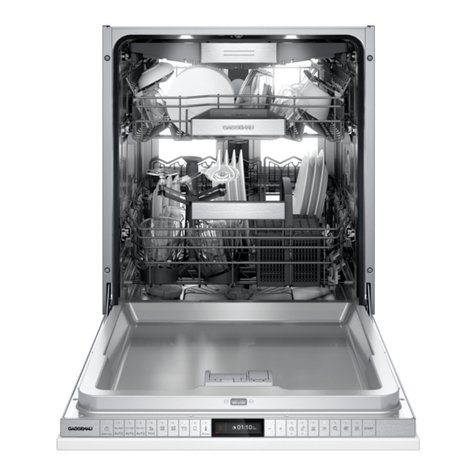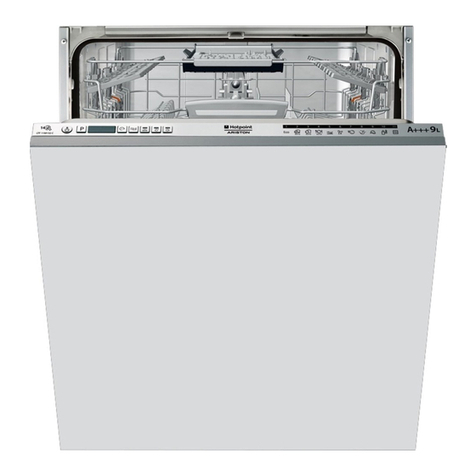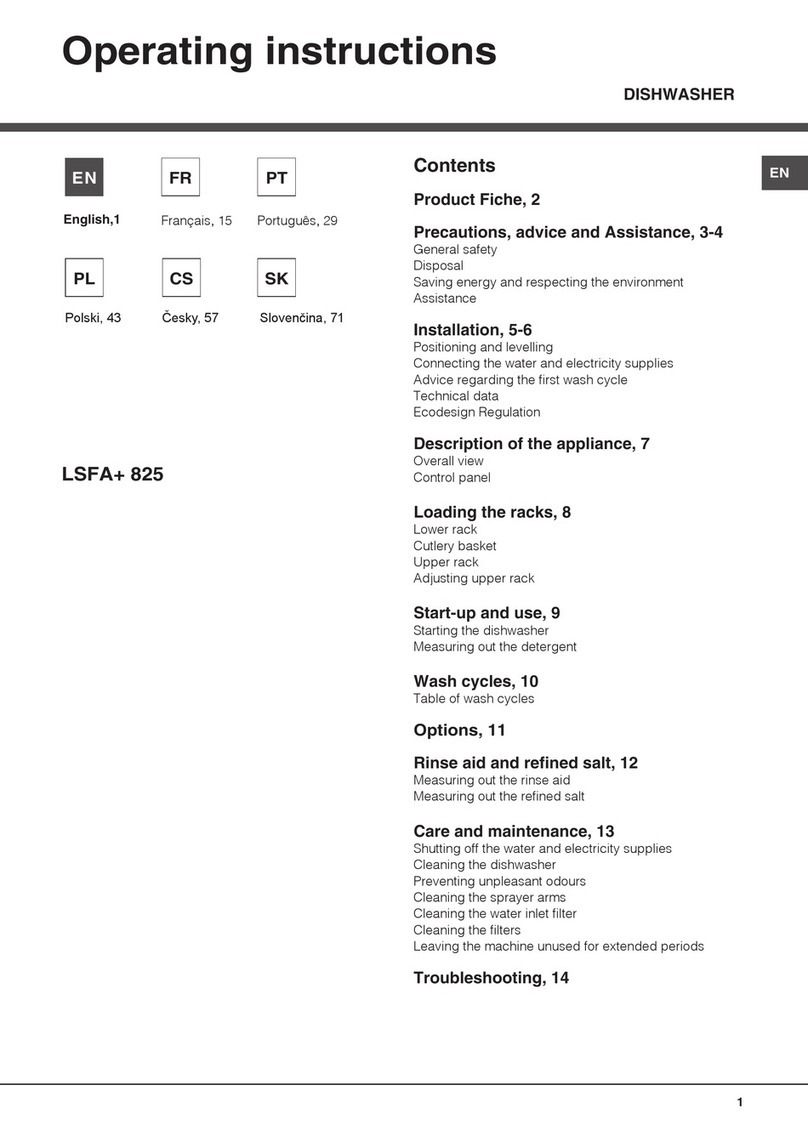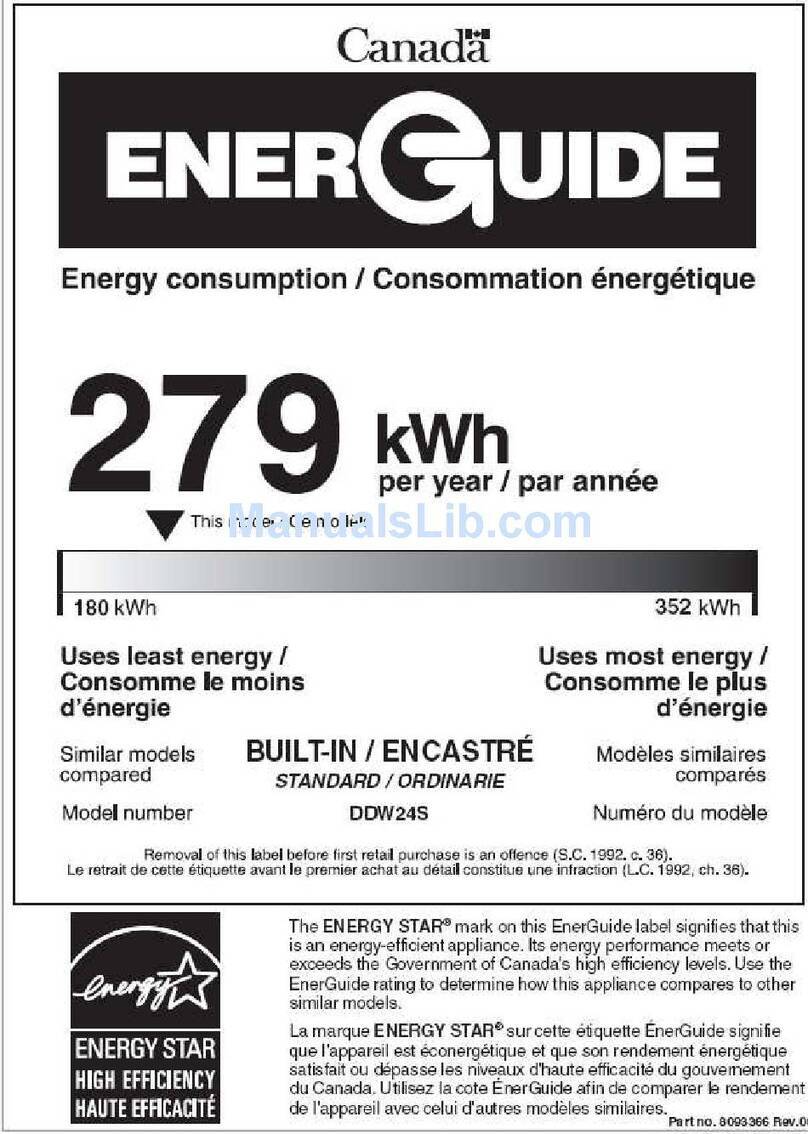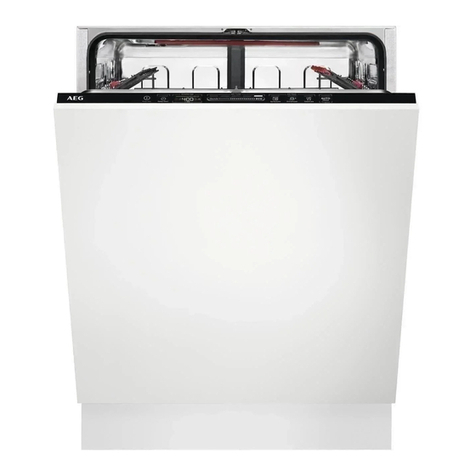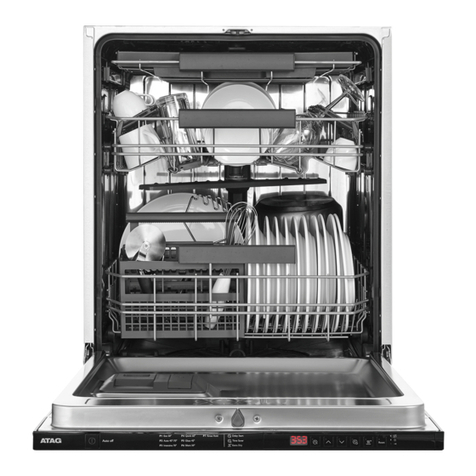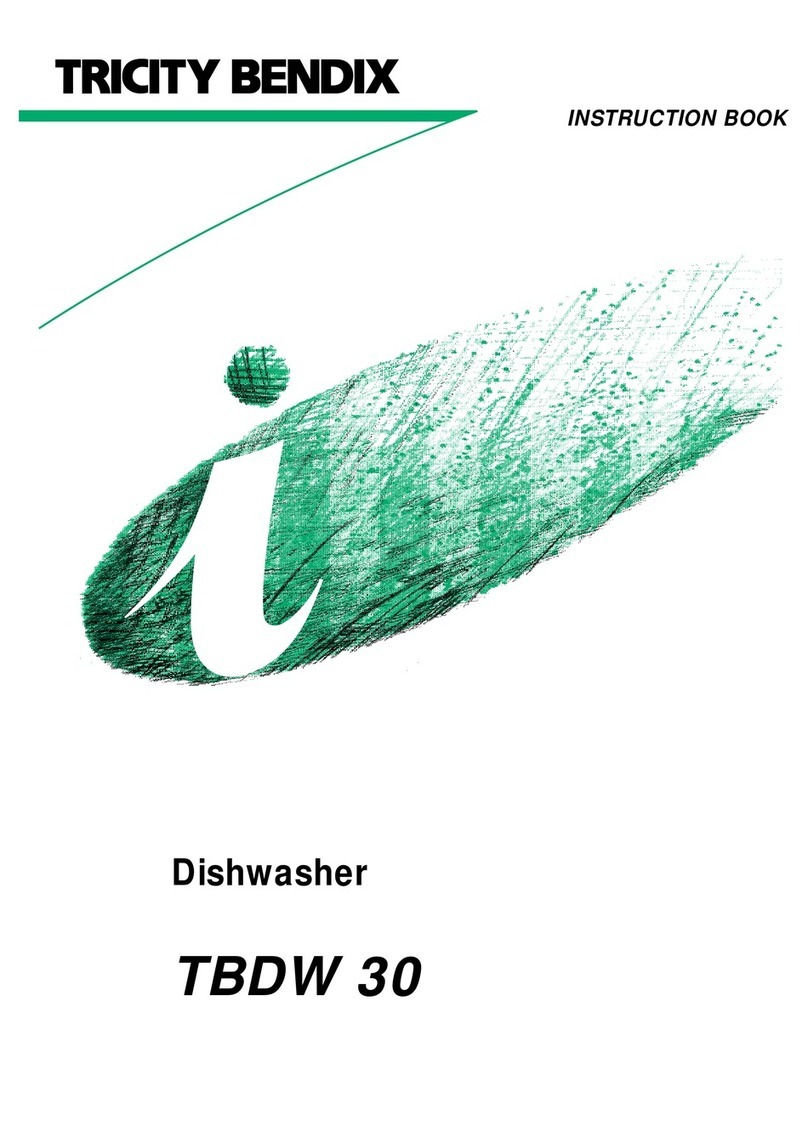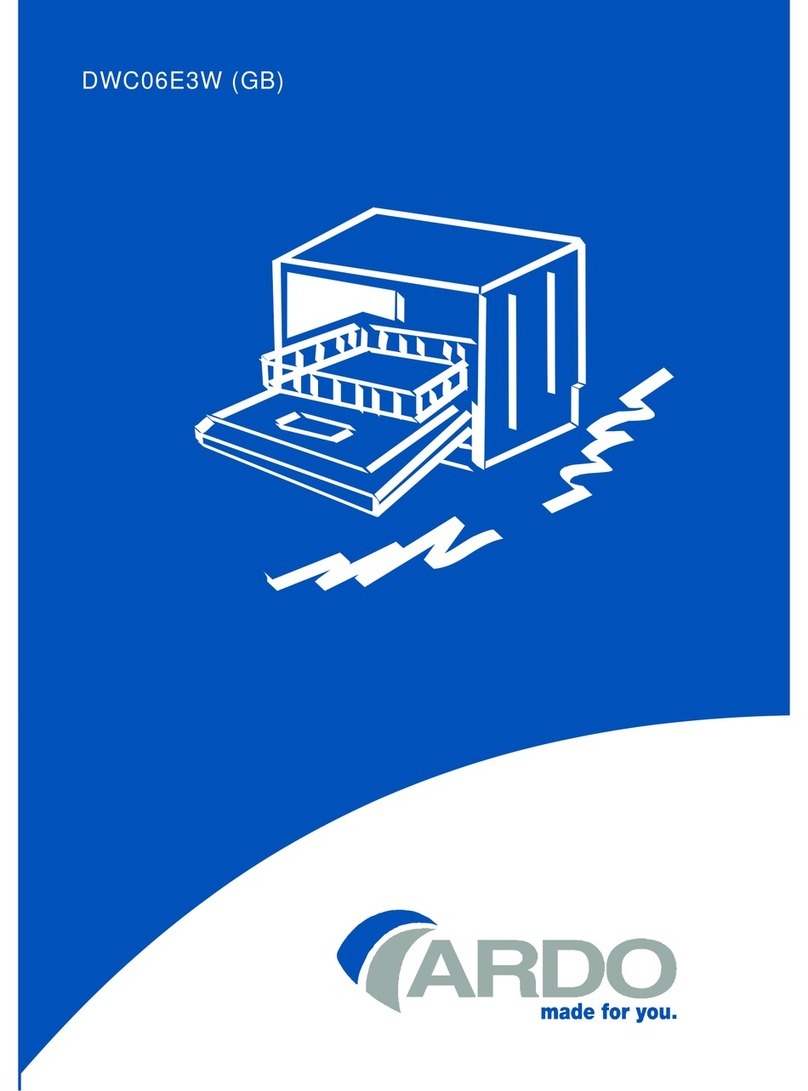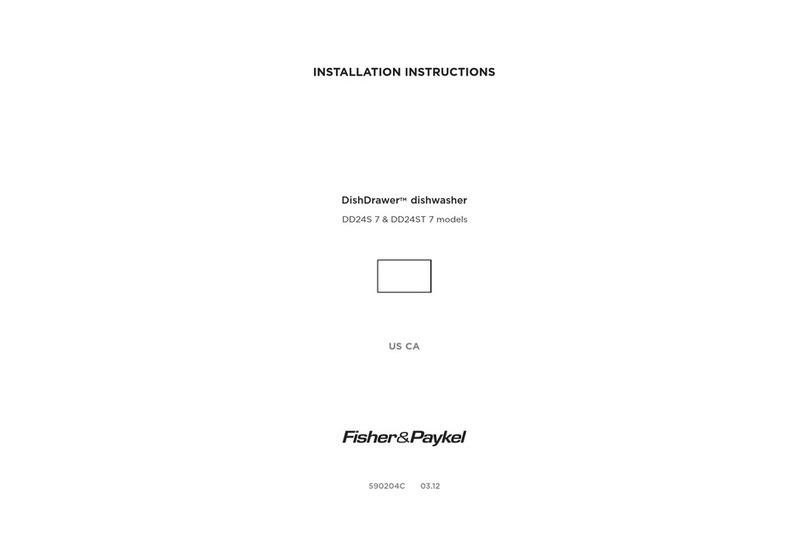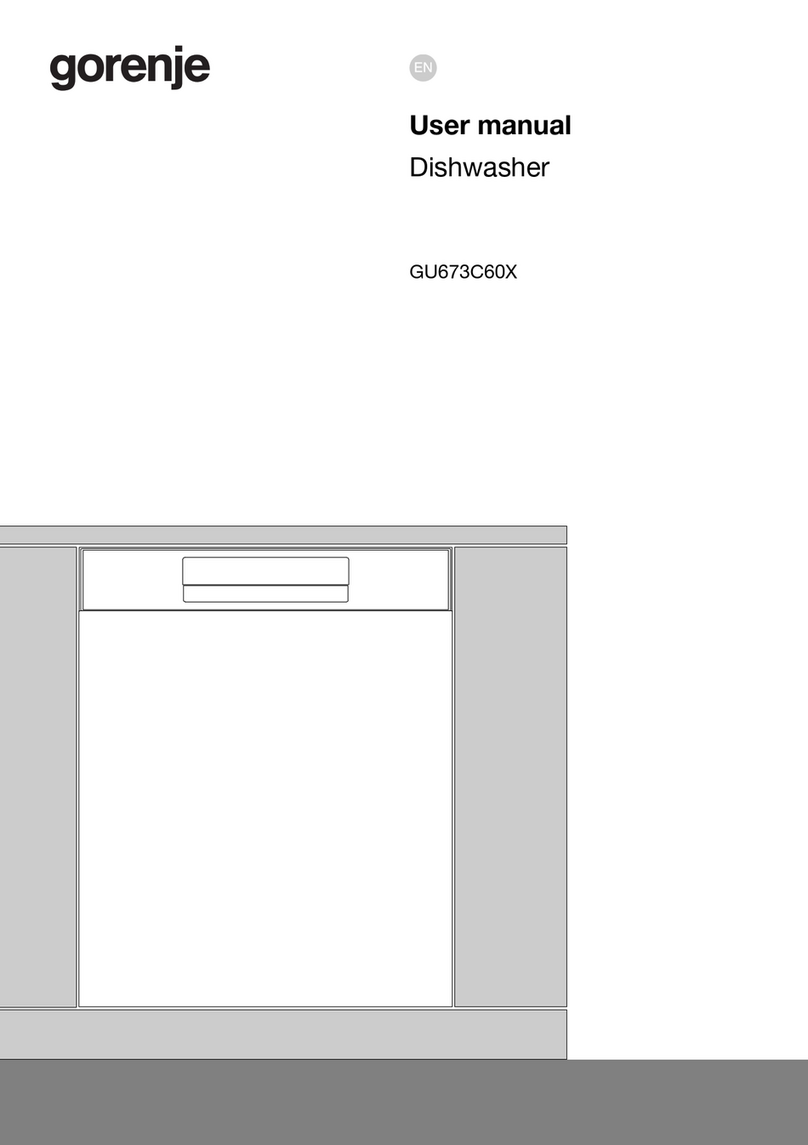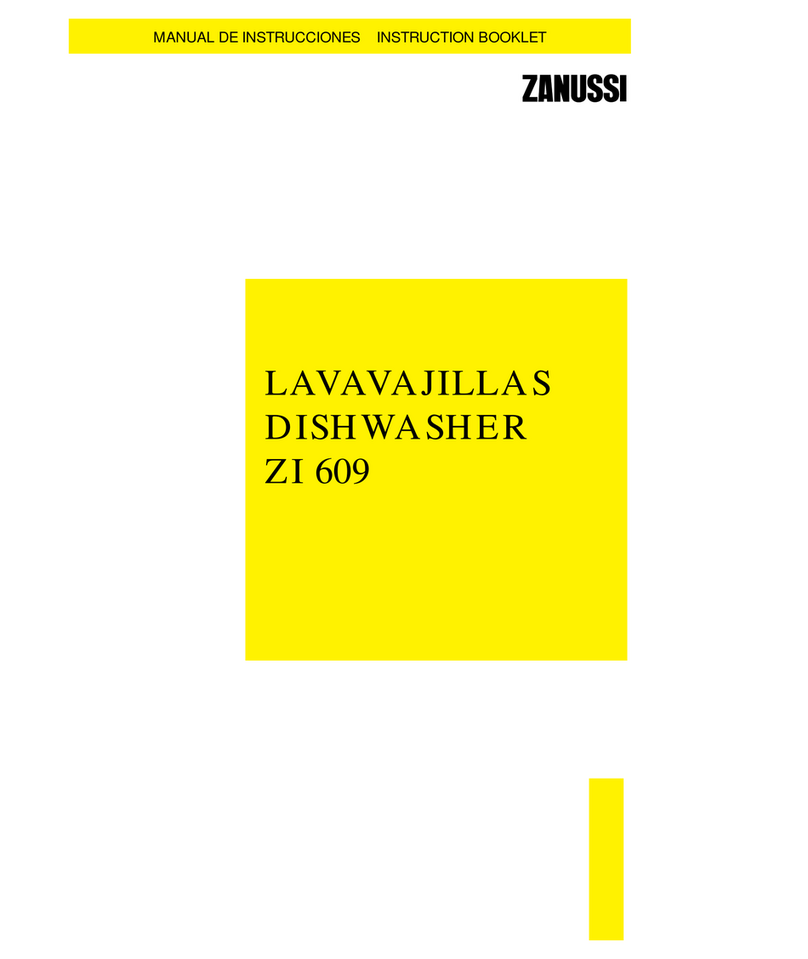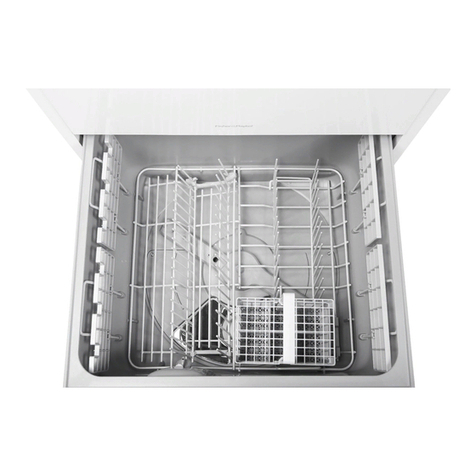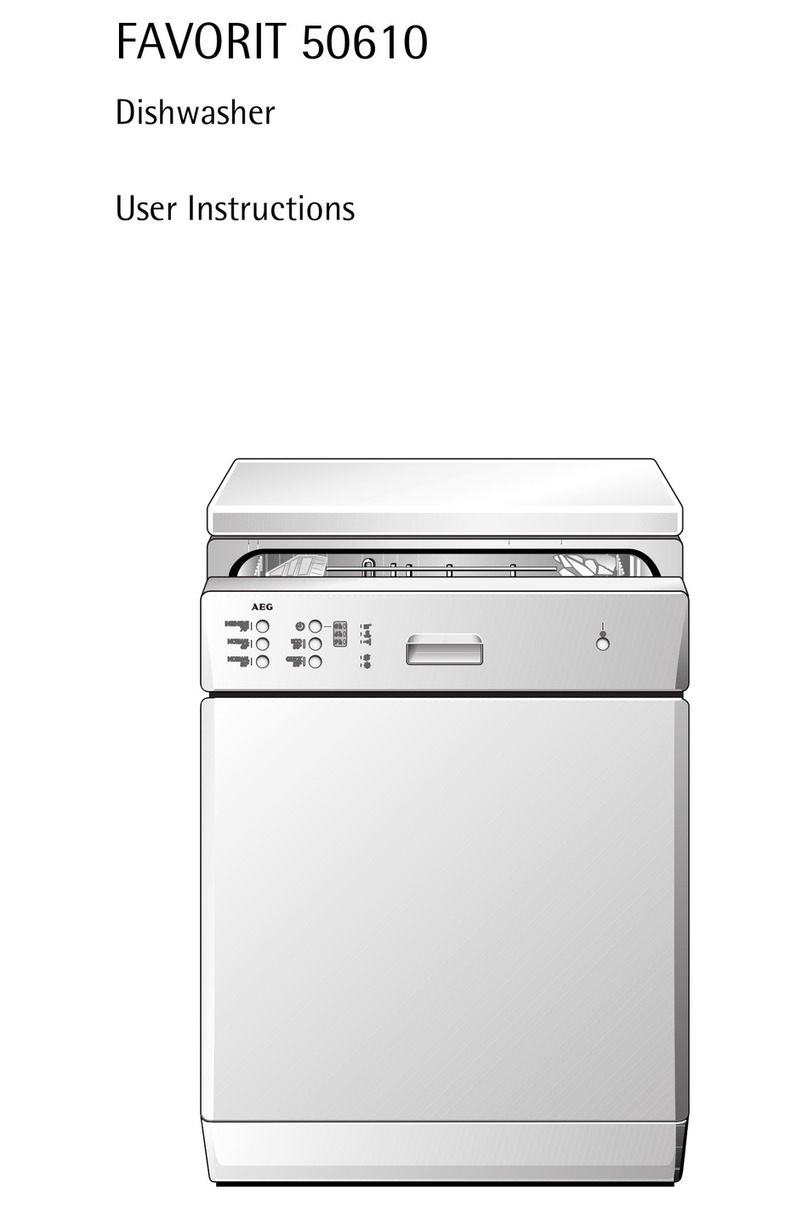Classeq D12000 Installation instructions

www.classeq.net
Installation & Operation Instructions
D12000

Page 1
Accessories and Extras
Detergents and Hygiene Products
Product
Application
Product Name
Quantity
Order
Code
Dishwashing
Products
Super clean dishwashing detergent
1x20l
DW1-20
Super shine dishwashing rinse aid
1x20l
DWRA1-20
Salt
Tablet Salt DuoMatik
25kg
SALT T
Baskets
Product Name
Order Code
500mm² basket –Flat
700GBP
500mm² basket –Sectioned
700DRP
500 mm² basket –Cutlery

Page 2
Dear Customer
Thank you for choosing Classeq, the machine you have selected has
been designed to give you lasting service.
Please read these instructions before installing, commissioning and
operating this machine.
The information contained herein is provided to avoid accidental risks
and/or damage to either yourself or your machine.
Make sure you and any other users understand the controls prior to using
your machine.
Please keep these instructions in a safe place for future reference.
If you have any questions, or are not sure about any information contained
in this manual please contact either your distributor or Classeq, details
are provided inside the back cover.
TABLE OF CONTENTS
1. KNOW YOUR MACHINE ..........................................................................................4
2. WARNING AND SAFETY INFORMATION ..................................................................8
3. PRE - INSTALLATION ...............................................................................................9
4. INSTALLATION ......................................................................................................12
5. COMMISSIONING .................................................................................................15
6. OPERATION ..........................................................................................................16
7. SERVICING & MAINTENANCE................................................................................17
8. TROUBLE SHOOTING ............................................................................................20
9. DECOMMISSIONING .............................................................................................22
10. APPENDIX A ..........................................................................................................23
11. APPENDIX B ..........................................................................................................24
12. APPENDIX C ..........................................................................................................27
13. APPENDIX D .........................................................................................................29
13. PARTS AND LABOUR WARRANTY TERMS .............................................................30

Page 3
EXPLANATION OF SYMBOLS USED
The following symbols have been used in this manual
Danger
Warning against potential
serious or fatal injuries to
persons if the described
precautionary measures are
not taken.
►
This symbol refers to a
chapter with more detailed
information
Warning!
Warning against potential
minor injuries to persons or
potential material damage if
the described precautionary
measures are not taken
.
Refer to foot note at bottom
of page
Caution
Warning against defects in or
destruction of the product if
the described precautionary
measures are not taken.
Recycle

Page 4
1. Know Your Machine
Wash pump
Rinse boiler
Rinse pump
Control panel
Wash arms and
fitting tubes
Rinse arms
Curtains
Gear box &
Drive motor
Cassette
assembly*
Filter
Fascia and
controls
Serial number /
Electric rating plate
* Take note of safety information regarding these components (►2)
Wash tunnel*

Page 5
1.1 Fascia and Controls
1.2 Contents of Your Machine
Items included within machine
1 x Installation and Operation Instructions
1 x Good Practice Guide
1 x Coil of Mains cable
2 x Splash guard
1 x Water inlet hose
2 x Long curtains
2 x Short curtains
1x Table end switch
1 x Table end switch wires
On / Off lamp
On / Off button
Pump running
lamp
Machine
heating lamp
Machine error
lamp
Wash temperature
thermometer
Rinse temperature
thermometer

Page 6
1.3 Machine specification
Dishwashers
D12000
Machine
(mm)
A = width
1300
B = depth
Closed
820
Open
1427
C = height
1380-1440
Basket size (mm) (square basket)
500
Load capacity (dishes)
18
Load capacity (pint glass)
30
Basket rate (Baskets/hour)
100
Rinse running water temperature
82°C
Rinse standby water temperature
60°C
Wash water temperature
55°C
A
B
C
B

Page 7
1.4 Machine orientation
In the D12000 basket is moved from the entry to the exit during the cleaning process. The
entry is considered the opening closest to the wash arms, while the exit will be closest to
the rinse arms. The machine and tabling must be installed to match. Refer Appendix Bfor
changing the orientation of the machine so that the entry is fixed to the table with the soiled
items.
Left hand D12000 Right hand D12000
Front
Front
ENTRY SIDE
ENTRY SIDE
WASH
ARMS
WASH
ARMS

Page 8
2. Warning and safety information
The machine should only be operated at or
within the voltage specified on the rating
plate (►1). The installer and user are
responsible for ensuring the installation and
operation of this machine are in
accordance with local and national
regulations.
The machine is not fitted with a heat
interlock but should be allowed to fully heat
to the correct temperatures before use.
Only use commercial grade detergents and
rinse-aids within your machine.
DO NOT use electrical extension lead(s) to
supply power to your machine.
Damage to the machine caused by lime
scale, or poor water quality will NOT be
covered by the Manufacturer’s Warranty.
Children should be supervised to ensure
that they do not play with, or operate the
machine.
When disconnecting your machine from the
mains electrical supply:
Machines hard wired (i.e. no plug),
this must be disconnected in
accordance with local and national
regulations; Classeq recommends
this is performed by a qualified
electrician.
Always remove excess food from the
dishes before loading.
Caution
DO NOT use your
machine as a waste
disposal unit.
Do not insert any items or parts of your
body between moving components, as this
could cause injury.
Beware of touching or placing items onto
the wash tunnel of the machine, as this can
get hot during use.

Page 9
3. Pre - Installation
After unpacking your machine, check it for
any possible transport damage. Never
install and use a damaged machine. If your
machine is damaged contact your retailer
immediately.
Make sure the water and electricity
connections of your machine are in
compliance with these instructions.
Remove all outer packaging and the
protective film from your machine before
positioning it.
Ensure all packaging materials are
disposed of in accordance with local and
national regulations.
When positioning the machine, ensure that
the water inlet and drain hoses are not
kinked or squashed. Care must also be
taken to ensure your machine does not rest
upon any of its supply hoses / leads.
Once installed use the adjustable feet to
ensure your machine is stable, with its
weight being distributed equally and does
not tilt more than 3°in any direction.

Page 10
3.1 Machine mains supply
requirements:
All mains connections are made at the rear
of the machine
A= Earth bonding / Equi-potential stud
B= Water supply hose connection
C= Drain / waste water hose exit
D= Mains electrical supply cable entry
3.2 Electrical connection (►3.1):
As a minimum Classeq recommends the
following standards are maintained:
All machines are connected via a
residual current device (R.C.D.) or
earth leakage protection device.
IEC 60204
Supply isolator switch must have all
pole separation of more than 3mm.
IEC 60335
The machine must be connected to an
equi-potential conductor, the
connection stud is located at the rear
of the machine (a suitable ring terminal
will be required), this is in addition to
the earthed electrical supply.
Prior to connecting the machine, ensure
that the voltage and the supply fuse
comply with the rating plate on the
machine (►1).
3.3 Earth bonding / Equi-
potential stud:
Danger
For safety reasons your
machine MUST be earth
bonded to adjacent
metalwork, or may be
earthed so that it is at
the same potential (i.e.
voltage).
Please consult your distributor, Classeq or
a qualified electrician if you are unsure how
to do this.
3.4 Mains electrical plug:
Your machine will be supplied without an
electrical plug and will need to be hard
wired into the isolating switch.
A
B
C
D
Earth bonding stud
Earth wire

Page 11
3.5 Mains electrical cable
specification:
If the mains electrical supply cable is
damaged or has deteriorated, it must be
replaced by a cable or cord assembly
supplied by Classeq, or its service agent,
and is to the following minimum
specification.
For electrical rating of your machine refer to
the rating plate (►1).
Machine rating
(Volts / Phase /
Amps)
Mains
Water
Cable
type
380-415V / 3N~/45A
Cold
5G10
380-415V / 3N~/32A
Hot
Temp.
Rating
Length
of cable
Conforms to
80°C
min.
Up to 5m
IEC 60335-2-58
&
IEC 60227 types
56 & 57
3.6 Water connection (►3.2):
For the longevity of your machine and to
ensure you get consistently good results, it
is essential your machine is either fed from
a soft water supply, or your Classeq
machine is connected to an appropriate
water softener.
IMPORTANT - All supplier warranties are
void if lime scale is present within your
machine.
Commercial machine wash results will be
affected by external conditions such as
incoming water temperature, pressure,
hardness and choice of chemicals.
3.7.1 Water supply hose:
Your machine comes with a new WRAS
approved water supply hose (►1.2),
requiring a G¾” (¾” BSP) male threaded
connection at the mains water supply. This
hose is to be connected to the machine and
the mains water supply.
Warning!
Old existing, defective or
damaged water supply
hoses are NOT to be
used when installing
your machine.
3.7.2 Water supply restrictions:
Incoming water temperature
4°C minimum
55°C maximum
Supply water dynamic pressure
0 to 2 bar (0 to 200 kPa)
Rinse booster pump required
2 to 4 bar (200 to 400 kPa)
No modifications required
4 to 6 bar (400 to 600 kPa)
Flow restrictor required
6 bar plus (600 kPa plus)
Pressure reducing valve required
If the above requirements are not adhered
to, the performance of the machine will be
impaired.
3.8 Drain / waste water hose
(►3.1 and 4.4):
Your machine is supplied with a waste
hose that has a Ø40mm hard connection.
This is to be connected to the site waste in
accordance with the instructions in this
manual. (►4.4)

Page 12
4. Installation
Make sure you have read section 3 of
this manual to familiarise yourself with
the machine before installation.
4.1 Recommended hand tools
Classeq recommends the following hand
tools to aid installation of your machine.
Recommended Hand Tools
Spirit level
3mm Hex key
Medium flat screwdriver
4.2 Electrical supply connection
Your machine must be connected directly
to the mains electrical supply using the
mains electrical cable provided.
Prior to connecting your machine, ensure
the electrical supply has a suitable and
adequate circuit breaker / fuse. For the
electrical rating of your machine refer to the
rating plate (►1). Contact your distributor,
qualified electrician or Classeq if you are
unsure how to check this.
Danger
All mains electrical work
must be carried out in
accordance with local
and national regulations,
and by a qualified
electrician.
DO NOT turn on the mains supply breaker
while the front panel of the machine is
open.
Please follow below steps for mains cable
installation:
Locate and loosen 2x M5 screw at
the bottom of right hand side
panel by 3mm Hex key.
Remove the side panel and locate
cable gland (D) and terminal block
(E).
Feed the mains cable through the
cable gland (D) and route it toward
terminal block (E).
Refer to terminal the block image
below to insert wires of mains
cable into the terminal block.
Make sure each individual wire is
inserted properly and there are no
loose strands.
E
D
L1
L2
L3
N
E

Page 13
Re-fit the side panel and fasten
the 2 x M5 screw at the bottom by
3mm hex key.
4.3 Water supply hose
connection (►3.7.1)
Classeq recommend installing a shut off
valve in the mains water supply line near
the machine such that it is easily
accessible.
Ensure the rubber seals within the ends of
the hose are in place.
Connect the 90°bend end of the water
supply hose to your machine (►3.1) and
the straight end to your water mains supply.
Ensure all connections are water tight
before using your machine.
4.4 Drain hose connection
Fit the drain hose of your machine to the
waste plumbing without kinking it.
Secure your hose firmly to the waste pipe
to avoid it coming off during the machine’s
operation.
The waste plumbing must only be
connected into the foul drains and not the
surface water drainage system.
Drain hose can flow down from the
waste outlet to the drain.
Ø40mm (1 ½”) standpipe required,
must be lower than the bottom of the
wash tank in the machine.
Ensure the joint between standpipe
and drain hose is water tight.
4.5.1 Chemical tubes
Locate and loosen 2x M5 screw at
the bottom of front panel by 3mm
hex key.
Remove front panel and locate the
detergent inlet on the front of the
wash tank and rinse aid inlet on
rinse pump inlet hose.
Feed rinse aid and detergent
tubes from holes (ii & iii) at the
rear base of unit.
i –Cable gland for table end switch’s cable
ii & iii –Feed holes for detergent and rinse aid tube
iv –Cable gland for chemical dosing cable
Rinse aid inlet
Detergent inlet
i
iiii
iii
iv

Page 14
Fit rinse aid tube onto the rinse aid
inlet and detergent tube onto the
detergent inlet. Tighten the tubes
with cable ties and ensure they
are water tight.
4.5.2 Chemical electric connection
Danger
All mains electrical work
must be carried out in
accordance with local
and national regulations,
and by a qualified
electrician.
The machine is not fitted with a chemical
dosing system. It is suggested that a
Winterhalter DR30 Max or similar chemical
dosing system is installed to the machine.
Failure to fit and correctly setup chemical
dosing systems will have a severely
adverse effect on the results of the
machine.
The chemical pump system can be
connected via the supplied terminal block
located on the side of the wash tank. See
below image for the signals provided.
The cable for the chemical pump system
should be fed through the cable gland at
the rear of the machine (►1)
4.5.3 Table end limit switch
It is very important that the table end limit
switch be installed at the end of the exit
table and the arm adjusted so that it is
activated by the basket before it reaches
the end of the table.
This switch will stop the machine when
activated allowing the operator time to
remove the clean baskets before more
baskets are pushed through the machine.
The drive motor of the machine is set to be
able to drive a minimum of 5 fully loaded
baskets through at the same time. If the
baskets are allowed to jam against the
tables it can cause damage to the machine
and/or baskets.
Orange
Red
Purple
Blue
Earth
Running
On
WT full
Neutral

Page 15
5. Commissioning
5.1 Installing curtain
Remove the curtains from the packing
and fit them into the curtain brackets as
shown in the picture below, a long curtain
at each end and small curtain in the centre.
Make sure all the curtains are fitted
properly into their respective brackets.
Caution!
Never run the machine
without the curtains
fitted.
5.2 Rinse & wash tank
temperatures:
Water temperatures are pre-set (►1.3),
however Classeq recommends these are
checked / calibrated to ensure compliance
to local and national regulations.
5.3 Cassette assembly
Check if cassette assembly is set at the
required speed and is fitted onto machine
system properly. It is very important that
the cassette assembly is fitted to its correct
position. If the cassette is not set to the
required speed see Appendix C for
instructions (►12)
5.3 Electrical supply setup
If the machine is fitted to a hot water supply
(maximum temperature of 55°C) then the
electrical supply to the machine can be
changed (►3.5). This is done by turning off
CB2, this turns off one of the banks of
elements used in the rinse boiler and
reduces the current required.
Cold fill (45A per phase)
Hot fill (32A per phase)
CB2 OFF
CB2 ON

Page 16
6. Operation
6.1 Controls:
Prior to turning the machine ON, ensure
that you are familiar with the controls on the
front fascia of the machine and the location
of the isolators for mains electricity and
water supply.
ON/OFF button
ON/OFF lamp
Wash water thermometer
Rinse water thermometer
Pump running lamp
Machine heating lamp
Machine error lamp
6.2 Switch the machine on:
Ensure both the water and electrical
supplies are connected and switched on,
ensure the door of your machine is closed.
Press the On/Off button located on the
fascia of the machine. The On/Off lamp
will illuminate.
The machine will now automatically fill and
heat, during this process the door MUST
remain closed all the times.
6.3 Machine ready to operate:
It is IMPORTANT after turning the machine
on for the first time each day to allow time
for it to fill and heat up before starting the
first wash cycle. The machine heating lamp
will illuminate. Once the machine
achieves the correct temperatures machine
heating lamp will go out and machine is
ready for the first cycle.
Machine rating
(Volts / Phase / Amps)
Required
initial fill &
heat up time
380-415V / 3N~/45A
Approximately
35min
380-415V / 3N~/32A
*These times may vary depending on your
incoming water temperature.
6.4 Starting a cycle:
Always remove excess food / debris from
any dishes / glasses to be washed.
Push the loaded basket into the machine
from the entry side. This will displace the
basket arm and start the cycle.
Once the cycle has been started the
cassette will move the basket through the
machine from the entry to exit.
The cycle lamp will be illuminated during
the cycle period.
Caution
Once the cassette has
started to move DO NOT
insert any items between
moving parts.
Cycle OFF
Cycle ON

Page 17
Once the last basket in the queue has
exited the machine the cassette will
continue to run for 2min to aid in ‘picking
up’ further baskets.
When the exit table is full the baskets
should activate the table end switch which
will stop the machine and illuminate the
error lamp . Once the clean baskets
have been removed the machine will
continue to run.
Left hand CST
Right hand CST
6.5 Draining:
During normal operation your machine will
away any excess water the weirs over the
top of the drain plug.
It is very important the machine is drained
down at the end of each works session and
the door is left open to allow drying.
Caution
The machine should
never be left full of water
if you are turning it off.
To drain the machine fully
Turn machine OFF at on/off button.
Open the door and remove filters.
Remove the drain plug from the wash
tank.
The machine should now drain under
gravity
Once drained put back the drain plug
into wash tank.
Now turn off the mains electrical
supply at the wall.
Note!
Once empty Classeq recommends the
mains electricity supply is turned off and
the machine is cleaned.
For hygiene reasons it is recommended
that once the machine has been drained
the door is left open to assist in natural
drying of the wash chamber.
Caution
Be aware:
-Hot wash tank water
Caution
Care Note:
Wash and rinse water
are very hot. DO NOT put
any part of your body
inside the machine while
the pump running light is
illuminated.

Page 18
7. Servicing &
Maintenance
DO NOT spray the exterior or interior of the
machine and the surrounding area (panels,
base) using a water hose, steam-jet air
ejector or high-pressure cleaner.
Ensure the base of the machine is never
submerged or standing in water when
operating the machine.
7.1 Prior to cleaning:
Ensure the machine has first been drained
down (►6.5).
Turn off the mains electrical supply before
cleaning the machine.
DO NOT use cleaning agents that contain
CHLORINE, BLEACH or HYPOCHLORITE.
DO NOT use STEEL WOOL, WIRE
BRUSHES or any other abrasive materials.
Before cleaning the wash chamber, ensure
all sharp items, such as broken glass or
other items which could cause injury are
removed carefully.
Daily internal cleaning:
The machine does not have a self-cleaning
program; it is recommended the machine is
cleaned daily to ensure the wash action of
the cycle is maintained.
If the interior of the machine is dirty: Clean
the interior with a sponge and a brush.
Clean any build-up from inside the air
pressure vessel (►1).
Open the door.
Remove and clean
curtains.
Remove and clean
the basket filter and
primary filter
Remove and clean
the secondary filter
and drain plug
Remove and clean
top and bottom
wash arms.
Clean all internal
surfaces of the
wash tunnel and
door
Refit all filters and
the drain plug
Refit top and bottom
wash arms
Refit all the curtains.

Page 19
7.2 Exterior cleaning:
Wipe the exterior
of the machine
with a damp
(NOT WET)
sponge.
Once dry, clean
using a
STAINLESS
STEEL cleaning
agent.
7.3 Lime scale:
For best results ensure your machine is
operated with soft water.
If your machine is operated with hard water
without the relevant water treatment, the
internal working and all water lines can
become scaled and your results will
deteriorate and the machine will not
perform.
The visual signs of lime scale being:
White marks may appear on glasses,
dishes and cutlery.
Dishes may appear dirty even after a
wash.
Build-up of lime scale within the wash
cabinet of your machine
Your local water board should be able to
tell you if the water in your area is hard or
soft. As a guide refer to the map in
Appendix C (►12).
If you find a build-up of white powder like
material in the wash tank of your machine,
you may need to de-scale your machine
(►11.3).
Damage to the machined caused by lime
scale will NOT be covered by the
Manufacturer’s Warranty.
Table of contents
Other Classeq Dishwasher manuals

Classeq
Classeq P500 User manual

Classeq
Classeq DUO 750 Administrator Guide

Classeq
Classeq DUO 750 Installation instructions

Classeq
Classeq D 400 Instruction manual
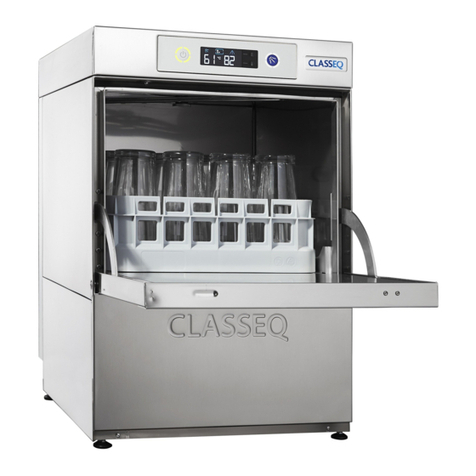
Classeq
Classeq G 350 Quick start guide
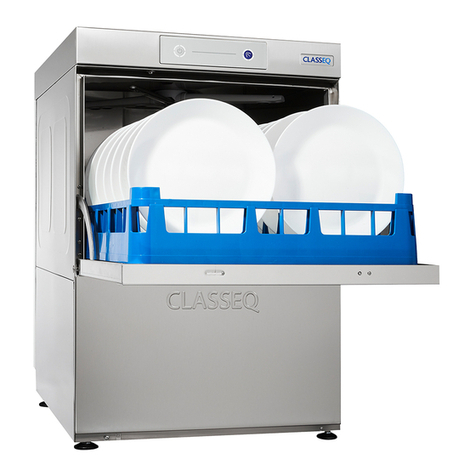
Classeq
Classeq ECO 2 Administrator Guide

Classeq
Classeq G 350 User manual

Classeq
Classeq CST Quick start guide
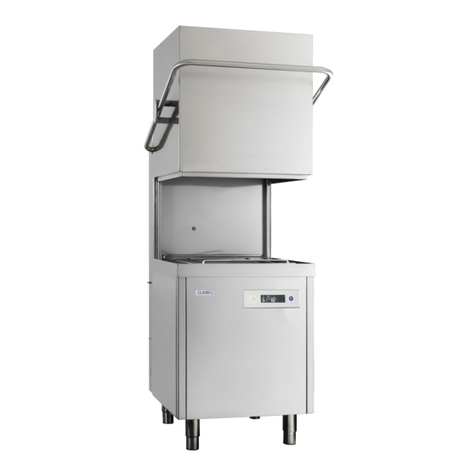
Classeq
Classeq P500AS User manual

Classeq
Classeq H750 Guide
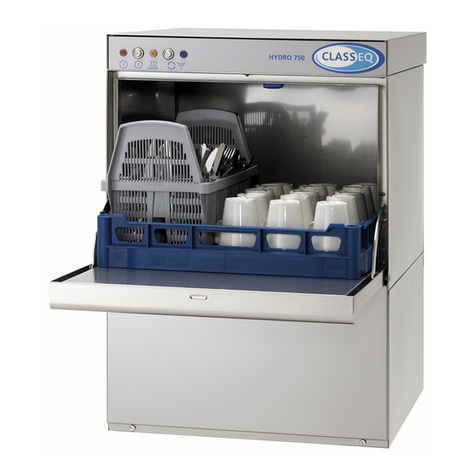
Classeq
Classeq ECO 3 Installation instructions

Classeq
Classeq HYDRO 850 User manual

Classeq
Classeq C200G Administrator Guide
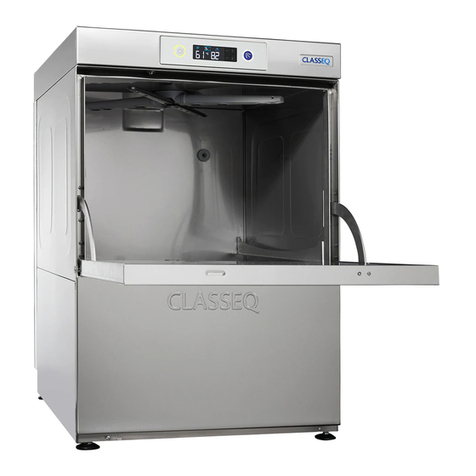
Classeq
Classeq D 400 Instruction manual

Classeq
Classeq P500 Instruction manual
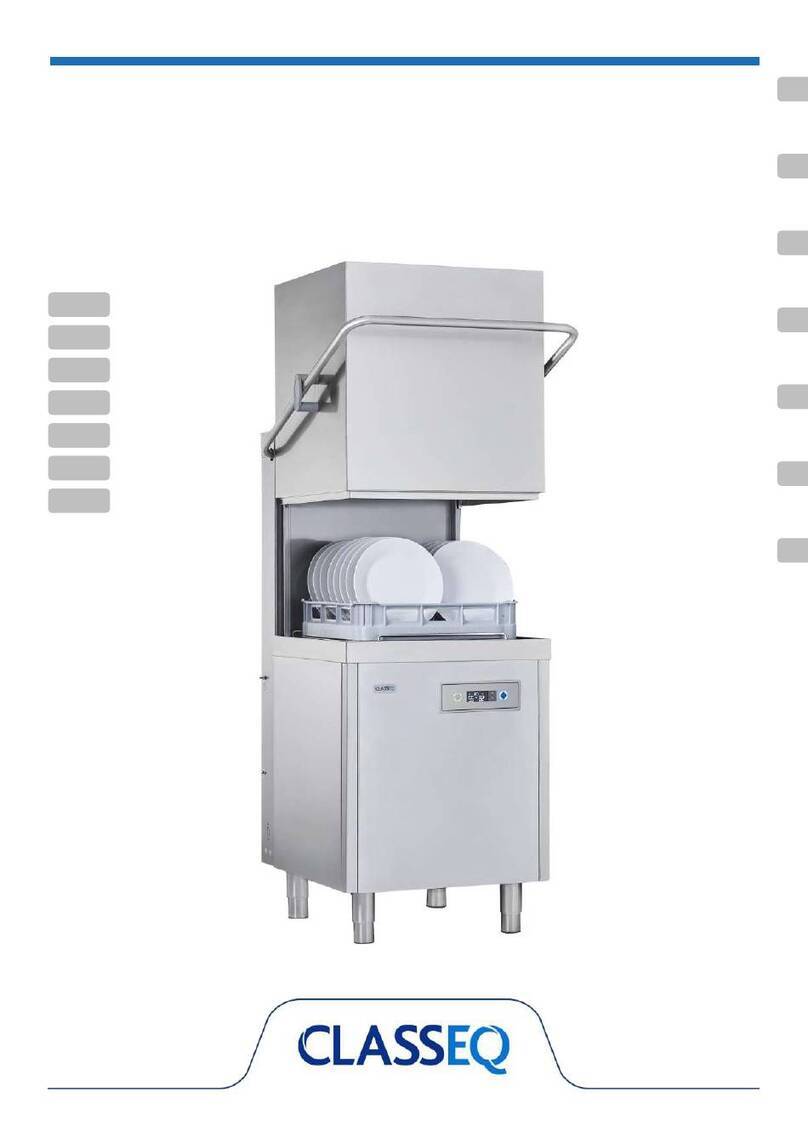
Classeq
Classeq P500A User manual
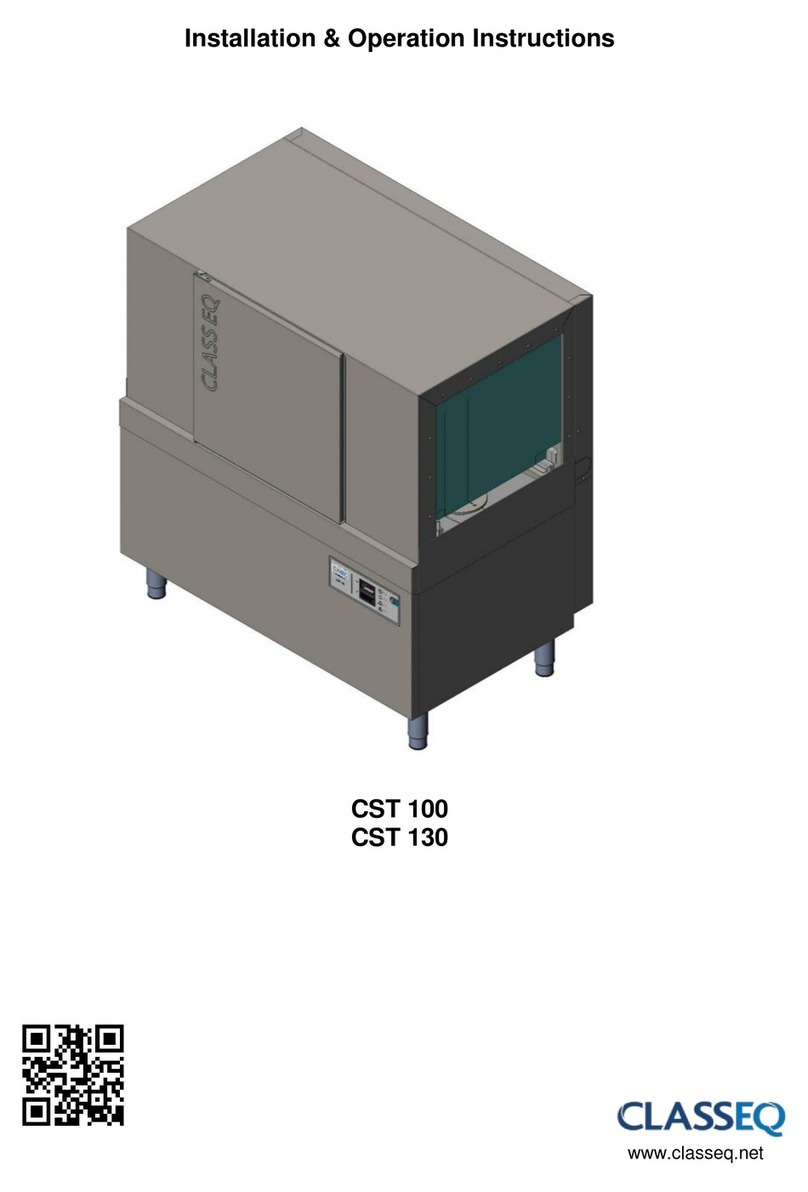
Classeq
Classeq CST 100 Installation instructions

Classeq
Classeq D 400 User manual

